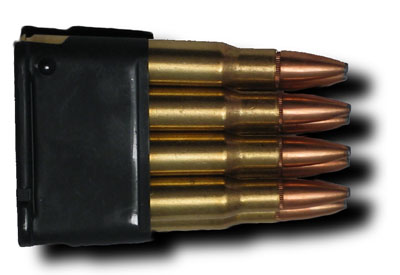 |
| (M1 Garand) |
Nostalgia has rose colored glasses. One of the most celebrated rifles today (at least in the United States) is the M-1 Garand--the infantry rifle used by most of the U.S. troops in WWII (some were still stuck with the Springfield 1903 bolt-action) and in the Korean War. One can still read praises of it today, such as this article on the Survivalist Blog. The author of that article writes:
The Garand remains an effective rifle to this day and is worthy of consideration by any prepper for hunting or self-defense. It is accurate and reliable and holds eight of the powerful, popular, and widely available .30-06 cartridge that is capable of handling pretty much anything you would want to hunt in North America. You can find Garands for as little as $600, and I will explain where to get them later in the article.Now I like the Garand, and I wish I had one. One of my friends has one, and I've had a chance to shoot it. It's fun. It's a piece of history. I don't think the weight is that bad when compared to a tricked out AR, or the 7.62 NATO rifles. However, given the choice of rifles available today, the Garand should not be considered by preppers for hunting or self-defense. That's right, I said "not."
Michael Z. Williamson, at The Sacred Cow Slaughterhouse, writes at length about the shortcomings of the Garand, particularly when compared to modern rifles, in his article "The Garand: Almost As Good As A Real Rifle." I'm not going to repeat his article here. Read it. It's funny, in a sarcastic manner. But I am going to point out some of the problems with the Garand as a prepper's weapon.
First, and foremost, it cannot handle most .30-06 ammunition. Because of the strain on the recoil system, it uses a moderate charge of medium burning powder behind a rather light-weight bullet. The standard hunting rounds that you can pick up most anywhere (which use a slow burning powder topped by a heavier bullet) can easily damage or brake the operating rod because they are loaded to higher power and pressures. Thus, it lacks the versatility implied in the Survivalist Blog post.
 |
| (Source) |
The problem with the Garand is that it was developed during the transition between bolt-action rifles and self-loading rifles. This means that it often incorporates the worst of both worlds. Thus, the second problem is that its magazine and reloading system sucks. Not only does it only take an 8-round en bloc clip that must be inserted from the top of the rifle (thus risking the infamous "Garand thumb" or "M1 thumb" as illustrated above), but because the clip and ammunition is pushed into the magazine as one unit, there is no way to top off a magazine.
 |
| (Source) |
Third, the weapon takes extra lubrication--the military used a special grease--to function reliably. It doesn't require as much care as the AR, but it takes more than most other combat rifles (including, strangely enough, those descended from its design).
Fourth, quality Garands are expensive. A "service grade" Garand--what I would consider the absolute minimum quality for useful shooting--is currently $695 plus shipping from CMP. You will pay a lot more from a private dealer. Refurbished with a new barrel runs $995. Better quality Garands with original parts (the correct grade and collector grade) are now only sold through auction, and probably will cost at least $1,500 to $2,000.
For the collector or someone just wanting a fun-to-shoot rifle, I'm all for getting a Garand. But for the survivalist or prepper to use as a defensive or hunting rifle, no. The Garand was pretty much obsolete when it was first issued, and it definitely is now.
No comments:
Post a Comment